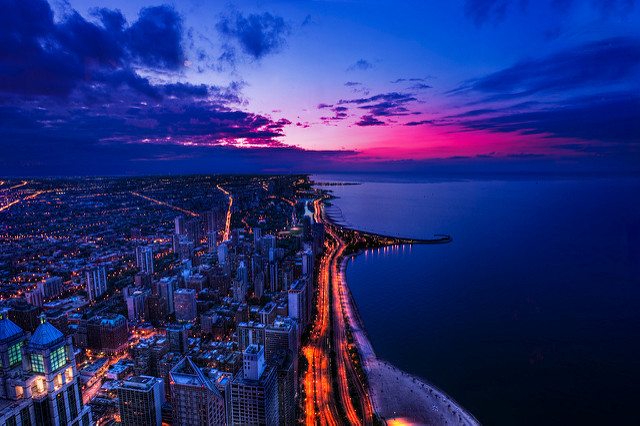
Nearly every significant moment of my grown-up life has somehow involved Lake Shore Drive. Not once, not twice, but three times my wife labored in the back seat of our Honda as I raced south to the University of Chicago hospital, pressing the pedal and my luck as far as they would go. My daughter warbled her first word—“duck”—across from the South Pond in Lincoln Park as cars whizzed along the Drive behind us. I witnessed a back-seat meltdown, a total bat-shit cuckoo apocalypse that has gone down in family lore, when my son refused to accept the idea that President Obama did not live in the lighthouse out past Navy Pier. And while driving to McCormick Place to tell my wife her mother had died, I felt the tears on my face switch directions as I rounded the Oak Street curve, looked up at the Drake Hotel sign in all its tacky glory, and was reassured.
Lake Shore Drive is my Champs-Élysées. My Route 66. The Drive has become such a constant companion in my crisscrossing of Chicago—north to south, south to north, nearly every day for three decades—that I forget how astounding it is. It is not really a highway, nor is it a typical urban thoroughfare. It exists in its own universe: a waterfront road that enhances both the water and the front. During those rare moments that I am not running late, stuck in traffic, or swearing at the construction, it hits me: I am on a thread of concrete that weaves between one of the world’s greatest inland oceans and America’s finest collection of architectural miracles. Look one way and you get a reminder of nature’s power, alternately calm and angry, inviting and foreboding. Look the other way and you’re awed by the heights of human ambition. Not a bad way to spend 30 minutes a day.
Oh, who are we kidding? Probably 45.


